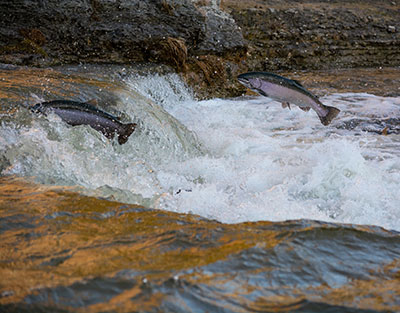
In a place that was once overflowing with various salmon species, the Yukon River’s salmon supply is now nearly depleted. As a result, the Indigenous communities that depend on this salmon as their primary food source are feeling the disruption and are being forced to turn to other species, such as moose.
Climate change effects are largely to blame for the severe decline in salmon populations along the Yukon River. Warmer water temperatures have altered the salmon’s lifecycle by causing them to mature earlier in the ocean and then return to freshwater at half their usual age and size.
The Alaska Journal of Commerce in 2013 reported that federal and state mismanagement is also at fault for the lack of salmon in the area. This report expressed that the state agency prioritized commercial industry over the Yukon king run. Affected Indigenous communities have had to compete for their food supply because of this favoritism.
Alaska Natives have explained that the loss of salmon fishing has not only created a hole in their food supply but has also impacted their cultural practices and economy. Ninety-four percent of households in the Yukon Flats area look to traditional salmon fishing for both food security and cultural survival.
Despite the changes, these Indigenous communities have persisted in their traditions of giving and maintaining togetherness even with low resources and they are determined to find a way to restore the salmon populations.
To read the full story, go here: https://www.hcn.org/issues/53.11/indigenous-affairs-fish-alaska-native-villages-band-together-to-keep-the-yukon-rivers-wild-salmon-afloat?utm_source=wcn1&utm_medium=email
